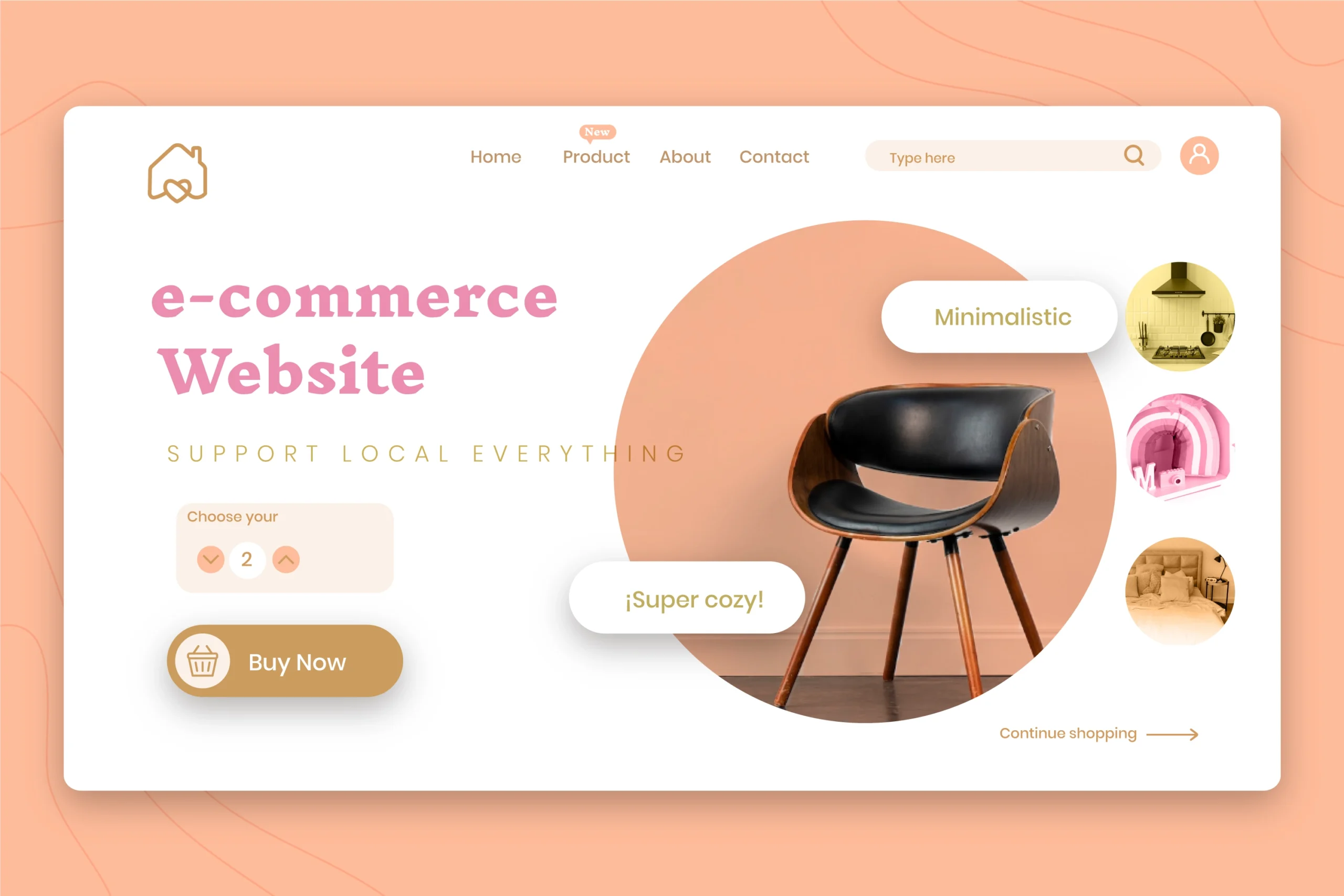Ecommerce Website Design: Success Ideas
Last updated on August 21, 2024
In today’s digital age, a well-designed e-commerce website is no longer a luxury; it’s a necessity. With countless online stores vying for customers’ attention, creating a compelling and user-friendly platform is crucial for driving sales and building brand loyalty. This blog delves into the essential elements of ecommerce website design, offering practical tips to help you create a successful online store.
Understanding Your Target Audience
Before diving into design, it’s essential to have a clear understanding of your target audience. Who are you trying to reach? What are their needs, preferences, and buying behaviors? By creating detailed customer personas, you can tailor your website design to resonate with your ideal customers.
The Importance of User Experience (UX)
A seamless user experience is paramount to e-commerce success. Customers expect a smooth and intuitive journey from the moment they land on your website until they complete a purchase. Here are some key UX considerations:
- Clear Navigation: Organize your website with a logical and easy-to-follow navigation structure. Use clear and descriptive labels for menu items.
- Fast loading times: optimize images and code to ensure your website loads quickly. Slow loading times can frustrate visitors and lead to high bounce rates.
- Mobile Optimization: With the increasing number of mobile shoppers, it’s crucial to have a responsive website that adapts to different screen sizes.
- Search Functionality: Implement a robust search function that allows customers to easily find products.
- Product Information: Provide detailed product descriptions, high-quality images, and customer reviews to help customers make informed decisions.
Visual Design and Branding
Your ecommerce website design visuals should reflect your brand identity and create a strong first impression. Consider the following design elements:
- Color Palette: Choose colors that evoke the desired emotions and align with your brand image.
- Typography: Select fonts that are easy to read and complement your overall design aesthetic.
- Imagery: Use high-quality images that showcase your products and tell a story.
- Layout: Create a clean and organized layout that guides visitors through your website.
- White Space: Utilize white space effectively to improve readability and create a sense of balance.
Call to Action (CTA)
A strong call to action (CTA) encourages visitors to take the desired action, whether it’s making a purchase, signing up for a newsletter, or contacting you. Use clear and compelling CTAs that stand out visually. Experiment with different CTA placements and wording to optimize conversions.
Ecommerce Website Design Best Practices
- Simplify the Checkout Process: Reduce the number of steps involved in checkout and minimize form fields. Offer guest checkout as an option.
- Secure Payment Gateways: Protect customer data by using reputable and secure payment gateways.
- Clear Return Policy: Build trust by clearly outlining your return policy.
- Optimize for Search Engines (SEO): Use relevant keywords, optimize product descriptions, and build high-quality backlinks to improve your website’s search engine ranking.
- Leverage social proof: Display customer reviews and testimonials to build credibility and trust.
- Personalization: Use customer data to offer personalized product recommendations and promotions.
- A/B Testing: Continuously experiment with different design elements and website variations to optimize performance.
- Mobile-First Design: Prioritize mobile optimization to ensure a seamless experience for mobile users.
Ecommerce Website Design Trends
Stay ahead of the competition by incorporating the latest ecommerce website design trends:
- Video Marketing: Use product videos to showcase features and benefits.
- Chatbots: Provide instant customer support and assistance.
- Augmented Reality (AR): Allow customers to visualize products in their own space.
- Voice Search Optimization: Optimize your website for voice search queries.
- Subscription Models: Offer subscription-based options for recurring revenue.
Conclusion
Designing a successful e-commerce website requires a combination of creativity, technical expertise, and a deep understanding of your target audience. By following these tips and staying up-to-date with industry trends, you can create an online store that drives sales and customer satisfaction. Remember: Your e-commerce website is a living entity. Continuously analyze your website’s performance, gather customer feedback, and make necessary adjustments to ensure ongoing success.
August 12, 2024



